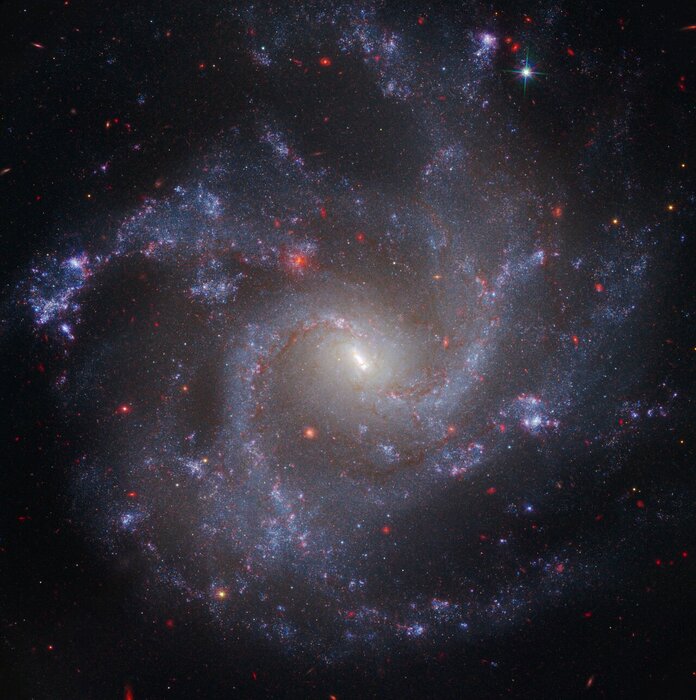The James Webb and Hubble telescopes, the most powerful space observatories, revealed this Thursday September 29 the detailed views of the impact of NASA's Dart spacecraft on an asteroid, images that will help scientists understand the expected process of modification of the 'orbit.
It is the first time that the two famous space telescopes have been used to simultaneously observe the same celestial object: an asteroid located 11 million kilometers from Earth, the target of the world's first planetary defense test.
Read alsoAre James Webb's colorful images just an illusion?
On Monday evening, NASA's Dart spacecraft deliberately crashed into the surface of Dimorphos, a small moon 160 meters in diameter orbiting a larger asteroid, in an attempt to deflect its orbit.
It will take a few days to a few weeks before scientists can confirm that its trajectory has indeed been altered.
And manage to locate it in relation to its original position.
But soon after the collision, early images - taken by ground-based telescopes and the onboard LICIACube nano-satellite - showed a vast dust cloud around Dimorphos, stretching for thousands of kilometres.
“A greater impact than expected”
A cloud on which the James Webb and Hubble telescopes, operating in space, were able to "
zoom in more finely
", Alan Fitzsimmons, an astronomer at Queen's University in Belfast, involved in the ground observations of the project, told AFP. ATLAS, a network of four telescopes operated from Hawaii.
These images allow us to see "
clearly how this material is shattered after the explosive impact of Dart, it's quite spectacular
," he says.
“
The impact seems much greater than expected
,” comments Ian Carnelli, head of the European Hera mission, which will inspect the damage to the surface of Dimorphos in four years.
“Plumes of materials”
Hera had counted on a crater about 10 meters in diameter, but in view of the images taken by LICIACube 50 km from the star, confirmed by those of space telescopes, it could be much larger... "
if crater there ya, because maybe a whole piece of Dimorphos was just ripped off
”.
The James Webb's NIRCam camera, working in the near infrared, observed the impact for several hours after the collision.
Its ten images reveal a compact core surrounded by "
plumes of material
" similar to expanding filaments, "
moving away from the center of where the impact took place
", describes a joint statement from the European Space Agency. (ESA), Webb and Hubble.
This photo released on September 29, 2022 by the European Space Agency is an image from the near-infrared camera of the James Webb Space Telescope showing Dimorphos, the lunar asteroid in the Didymos double asteroid system, about 4 hours after impact NASA's Double Asteroid Redirection Test.
HANDOUT / AFP
Images from the Hubble telescope, taken by a wide-angle camera 22 minutes, 5 hours and 8 hours after the crash, show in visible light the movement of ejecta - the material torn from the star.
These appear in the form of rays, with a gradual increase in luminosity, but which stabilized eight hours after the impact, which “
intrigues astronomers
”, according to the press release.
Read alsoHow NASA deflected an asteroid for the first time
The James Webb telescope, which has been observing 1.5 million kilometers from Earth since last July, and Hubble, which has been in service for more than 30 years, will soon reveal how much material has been ejected, its nature (large pieces or fine dust?) and at what speed.
This information will help scientists "
understand how effectively a kinetic impact can alter an asteroid's orbit
," the statement said.
The kinetic impact technique experimented by NASA consists of colliding with an asteroid in order to “
push
” it slightly, and thus deviate its trajectory.
A bit like playing pool in space.
Read alsoNasa hit an asteroid to deflect it, a first for humanity
The more material ejected, the more the trajectory has a chance of being altered.
"
The speed with which astronomers will be able to measure the deviation will depend on the effectiveness of Dart
", underlines Alan Fitzsimmons.








